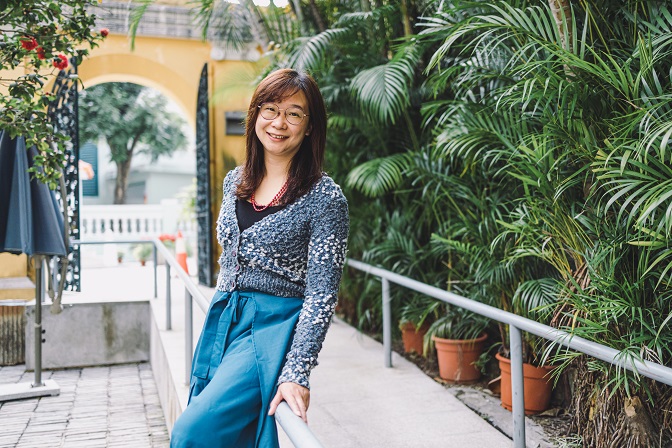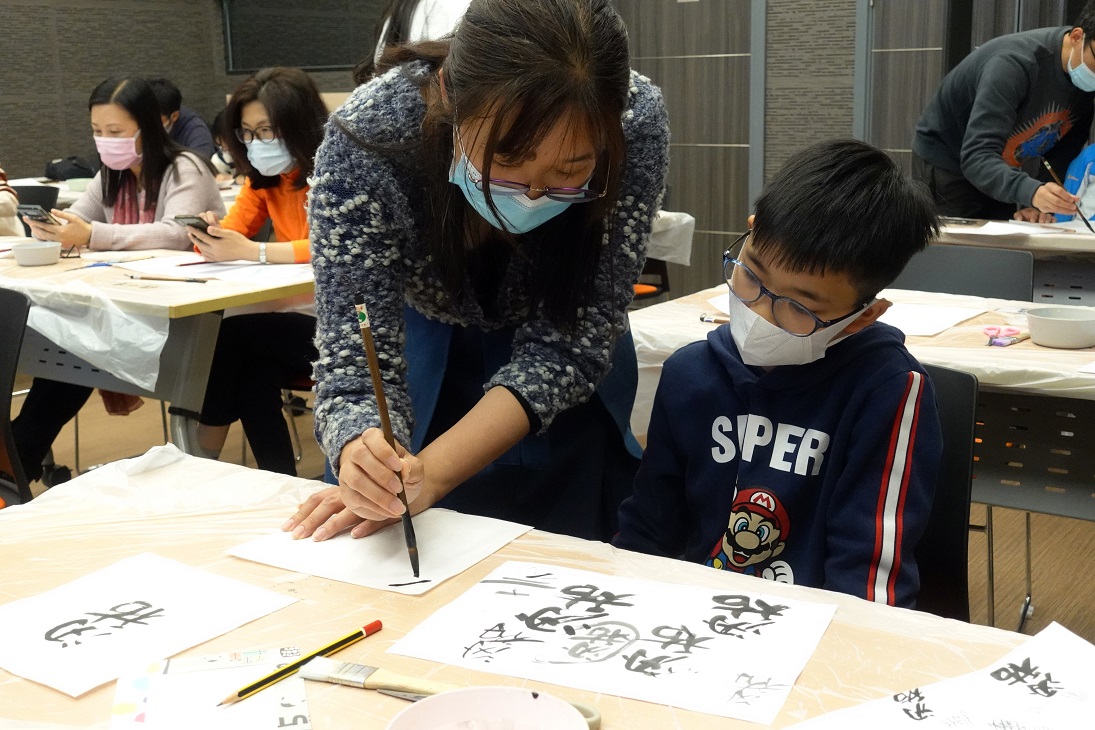TEXT__Yan Lam PHOTOS_Panda Lei

Debbie encourages everyone to use their imagination and create their own compound characters.
Characters are the basic components of articles and books, as well as the means of emotional expression, closely related to reading. In the “Calligraphy Writing — Workshop on Creative Calligraphy & Compound Chinese Characters” held by the Macao Public Library, Debbie Tai, a visual arts educator in Macao, showed participants how to learn Chinese characters from different perspectives and feel the subtleties of Chinese characters from observing and writing them. In this way, participants can create their own compound characters to develop interest in reading and writing.
The culture of Chinese characters has a long history. For example, a hieroglyph is a character used to depict the shape of an object like a painting. When writing with a brush, the intensity of the brush stroke and the shades of the ink can present the same character in different styles. Debbie took the character “安” as an example, and pointed out that the character looks like a woman sitting comfortably in a house, thus carrying the meaning of safety. “The concept of compound characters actually emerged a long time ago. For example, the compound character on Spring Festival couplets ingeniously made of four characters ‘招財進寶’ expresses the meaning of ushering wealth and treasure.” Debbie explained.
Chinese contemporary artist Xu Bing’s calligraphic art creation has also brought a lot of inspiration to Debbie. Xu Bing organizes English letters into structures that resemble Chinese characters, called “square word calligraphy,” injecting vitality and personal styles into English words and Chinese characters. Debbie said, “I encourage everyone to create different compound characters, whether in Chinese, English, or even pictures. It is a process of expressing yourself, combining words, life and ideas to create your own characters. I believe that the writing process will enable people who write to establish a closer connection with words and gradually cultivate their sensitivity to words, so that everyone can find the pleasure of reading in writing Chinese characters.”
Debbie is the instructor of the “Calligraphy Writing — Workshop on Creative Calligraphy & Compound Chinese Characters” held by the Macao Public Library.



